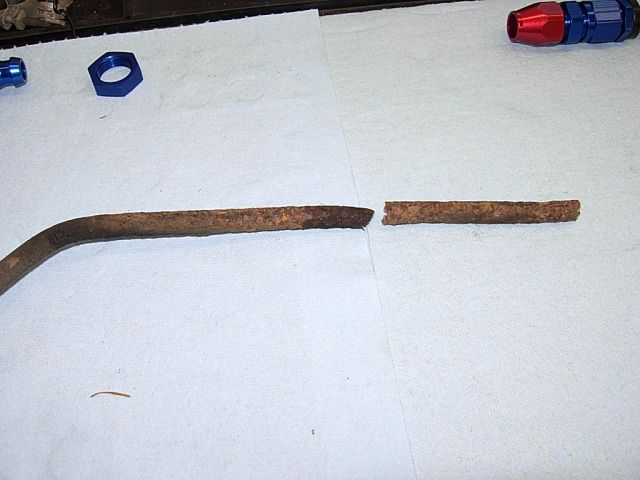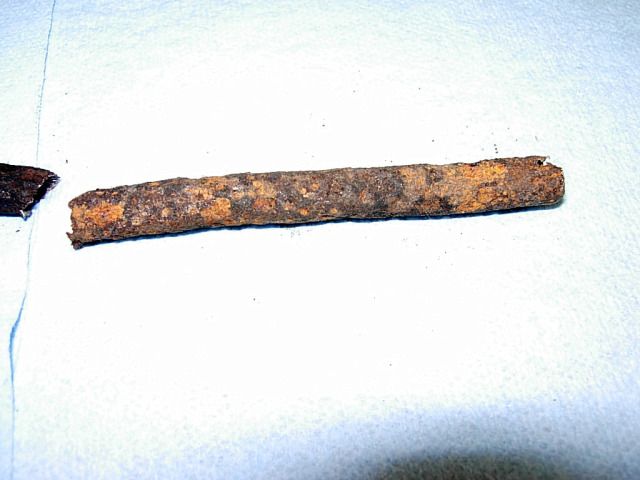robert campbell
Well-known member
- Joined
- Apr 10, 2007
- Messages
- 4,322
All,
This may be old thoughts to the experienced GT/CS and HCS restorer such as Marty and Neil, but I stumbled onto this while upgrading my GNS to a 1/2 inch Moroso Aluminum fuel line.
Follow your fuel line behind the “front” of the left front tire along the frame rail. Move to behind the front tire and see it as it disappears from the wheel well going back into the frame torque box area. Now get a piece of cardboard lay just about at the front of the front door and look up. You will see it as it exits behind the torque box and you will see a small section of rubber fuel line that connects the back section of fuel line to front section with two hose clamps. It is about 4 to 6 inches long.
Now over the years I have replaced many of these fuel line sections on 1968 Mustangs. They are often overlooked and they can break and start spilling a lot of gas.....
But wait, as Marty and Neil know, and I do now. THERE'S MORE!!
The section of the front line that is “not visible” in the torque box area is subjected to a lot of moisture. As I was undoing my claps for the rubber section a lot of fuel started coming out. I quickly got a pan and ran to the back. Yes, bag brag, it is on my four post lift and I clamped the fuel line at the gas tank sending unit with a vice grip. No damage no fire!!! Upon further inspection I thought that the rubber hose spilt or broke, but NNNNOOO! The steel fuel line inside torque box area was so corroded and thin it just basically broke in half.
All GT/CS and HCS owners should take a look at the rubber line as a minimum. My car was, and, is not rusty and a very solid NW car. But the front tire keeps moisture is this area any time you drive on a wet road. For most owners not a problem. But how long have you owned you car? And how many early wet miles was it subjected to? Look at the corrosion on this area of my fuel line you can’t see.
Rob


This may be old thoughts to the experienced GT/CS and HCS restorer such as Marty and Neil, but I stumbled onto this while upgrading my GNS to a 1/2 inch Moroso Aluminum fuel line.
Follow your fuel line behind the “front” of the left front tire along the frame rail. Move to behind the front tire and see it as it disappears from the wheel well going back into the frame torque box area. Now get a piece of cardboard lay just about at the front of the front door and look up. You will see it as it exits behind the torque box and you will see a small section of rubber fuel line that connects the back section of fuel line to front section with two hose clamps. It is about 4 to 6 inches long.
Now over the years I have replaced many of these fuel line sections on 1968 Mustangs. They are often overlooked and they can break and start spilling a lot of gas.....
But wait, as Marty and Neil know, and I do now. THERE'S MORE!!
The section of the front line that is “not visible” in the torque box area is subjected to a lot of moisture. As I was undoing my claps for the rubber section a lot of fuel started coming out. I quickly got a pan and ran to the back. Yes, bag brag, it is on my four post lift and I clamped the fuel line at the gas tank sending unit with a vice grip. No damage no fire!!! Upon further inspection I thought that the rubber hose spilt or broke, but NNNNOOO! The steel fuel line inside torque box area was so corroded and thin it just basically broke in half.
All GT/CS and HCS owners should take a look at the rubber line as a minimum. My car was, and, is not rusty and a very solid NW car. But the front tire keeps moisture is this area any time you drive on a wet road. For most owners not a problem. But how long have you owned you car? And how many early wet miles was it subjected to? Look at the corrosion on this area of my fuel line you can’t see.
Rob


